The Male Figure
In our interview with artist Brenden Sanborn, he details why the male figure is such a transfixing subject to paint time after time, why LGBT representation matters in art, and how his preferred techniques and mediums keep him inspired.
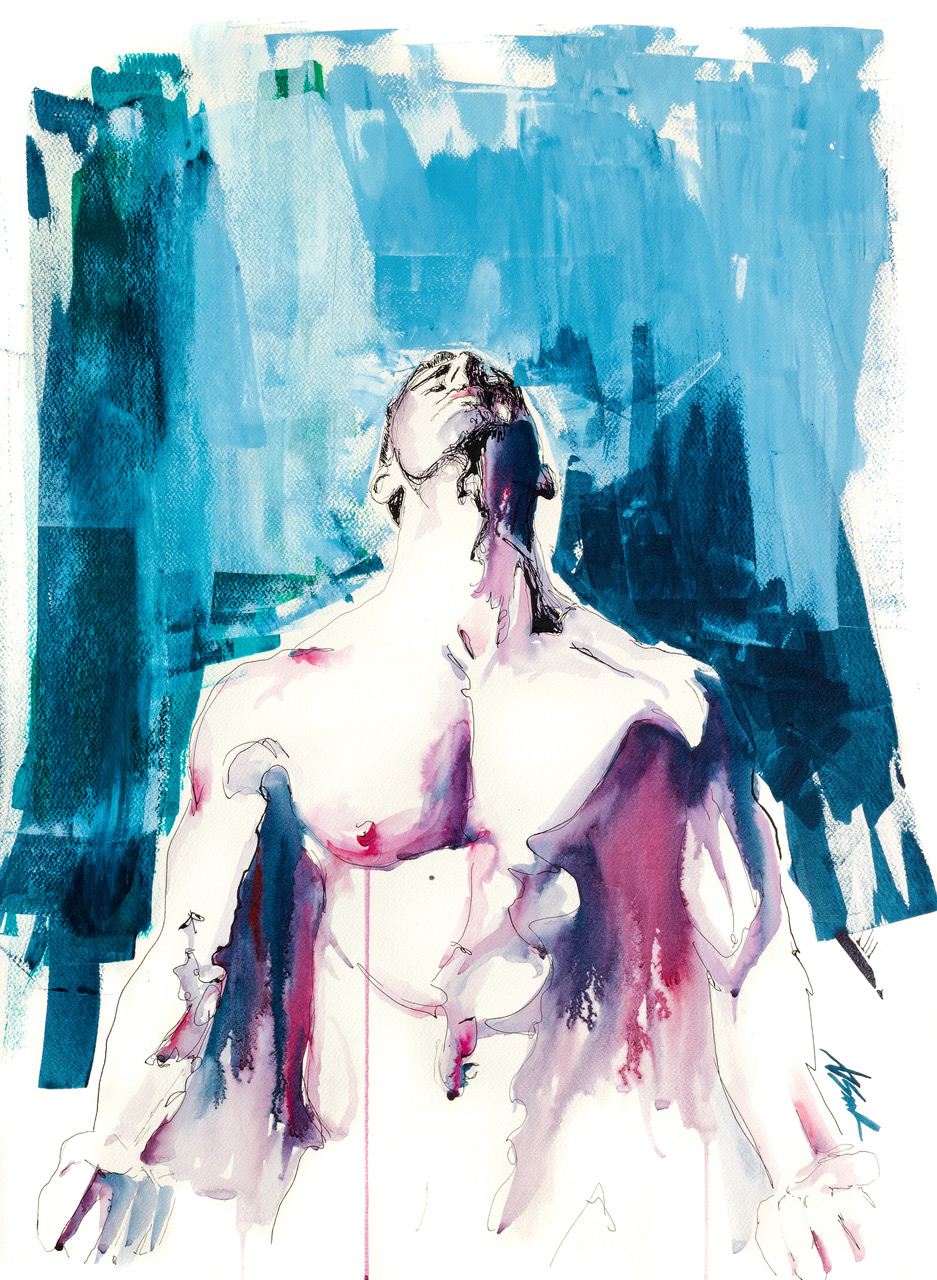


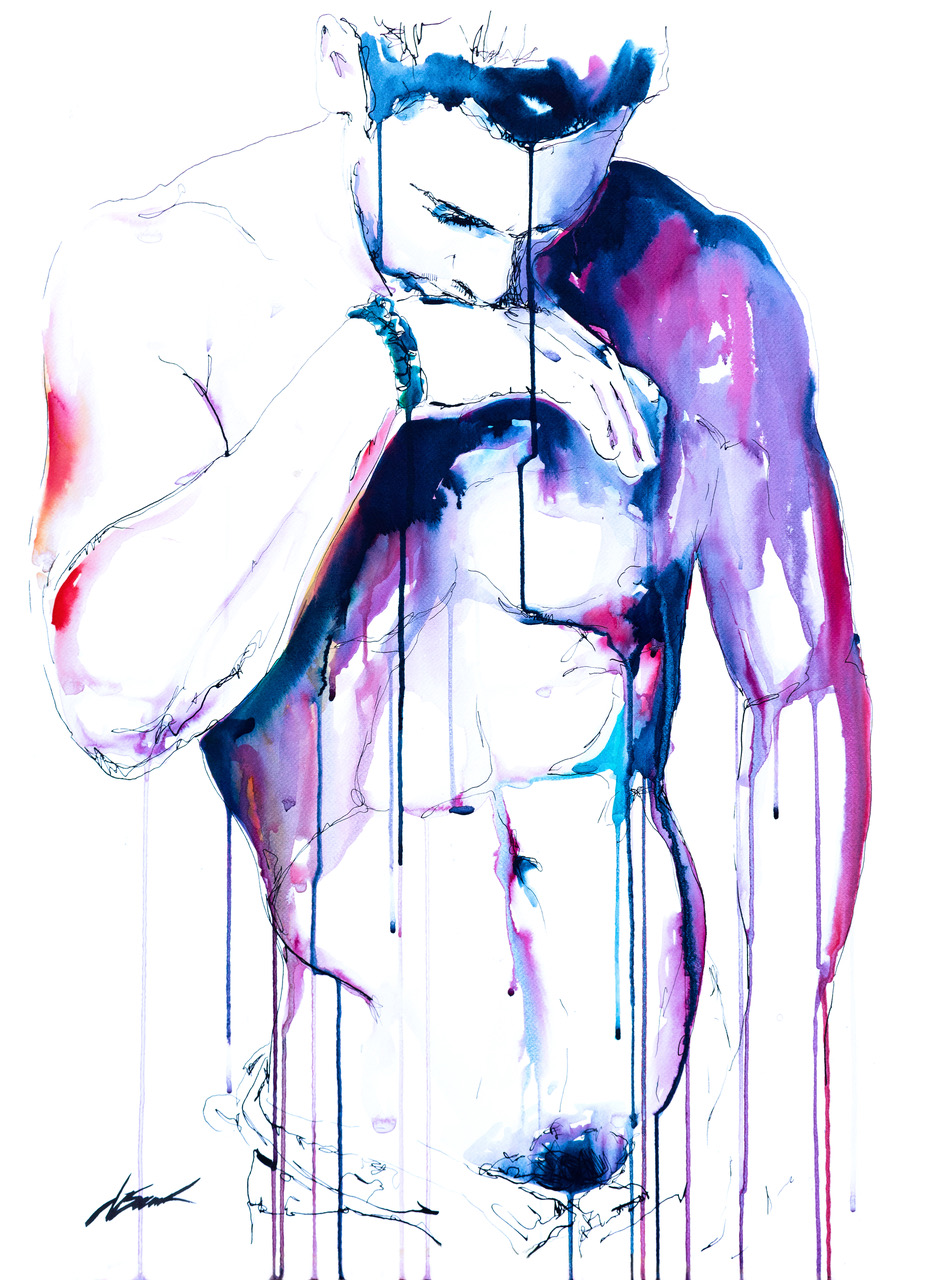

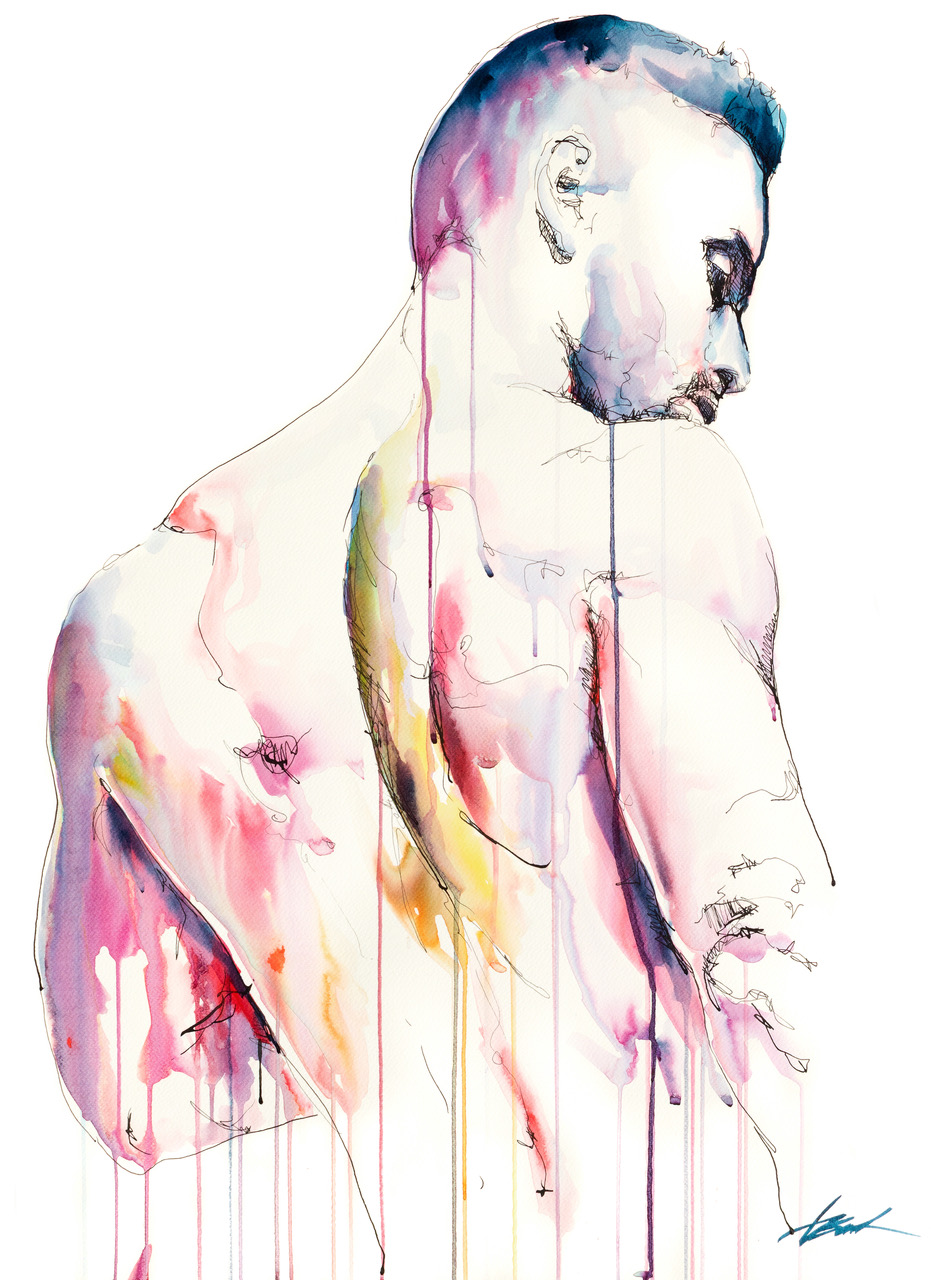
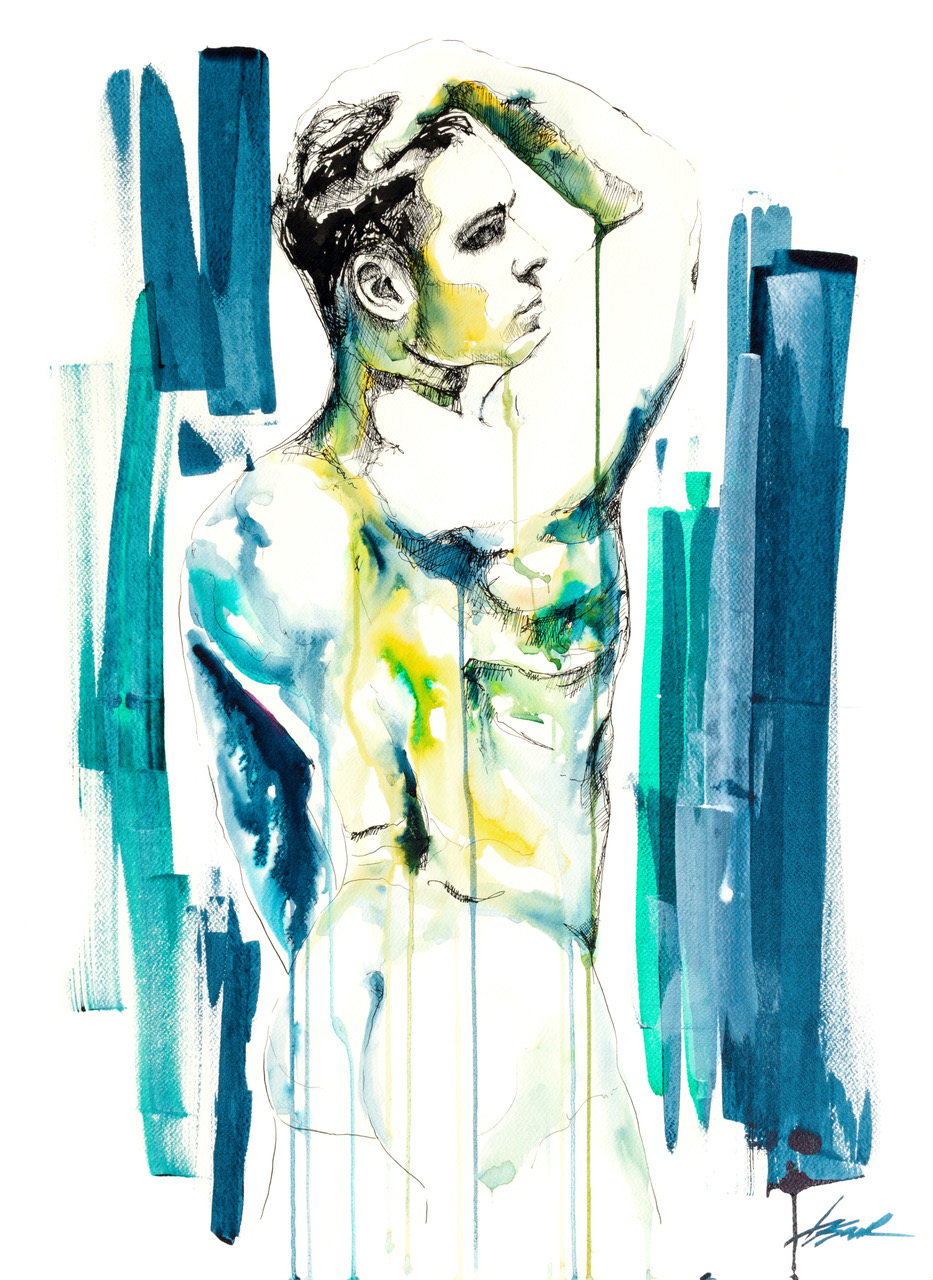

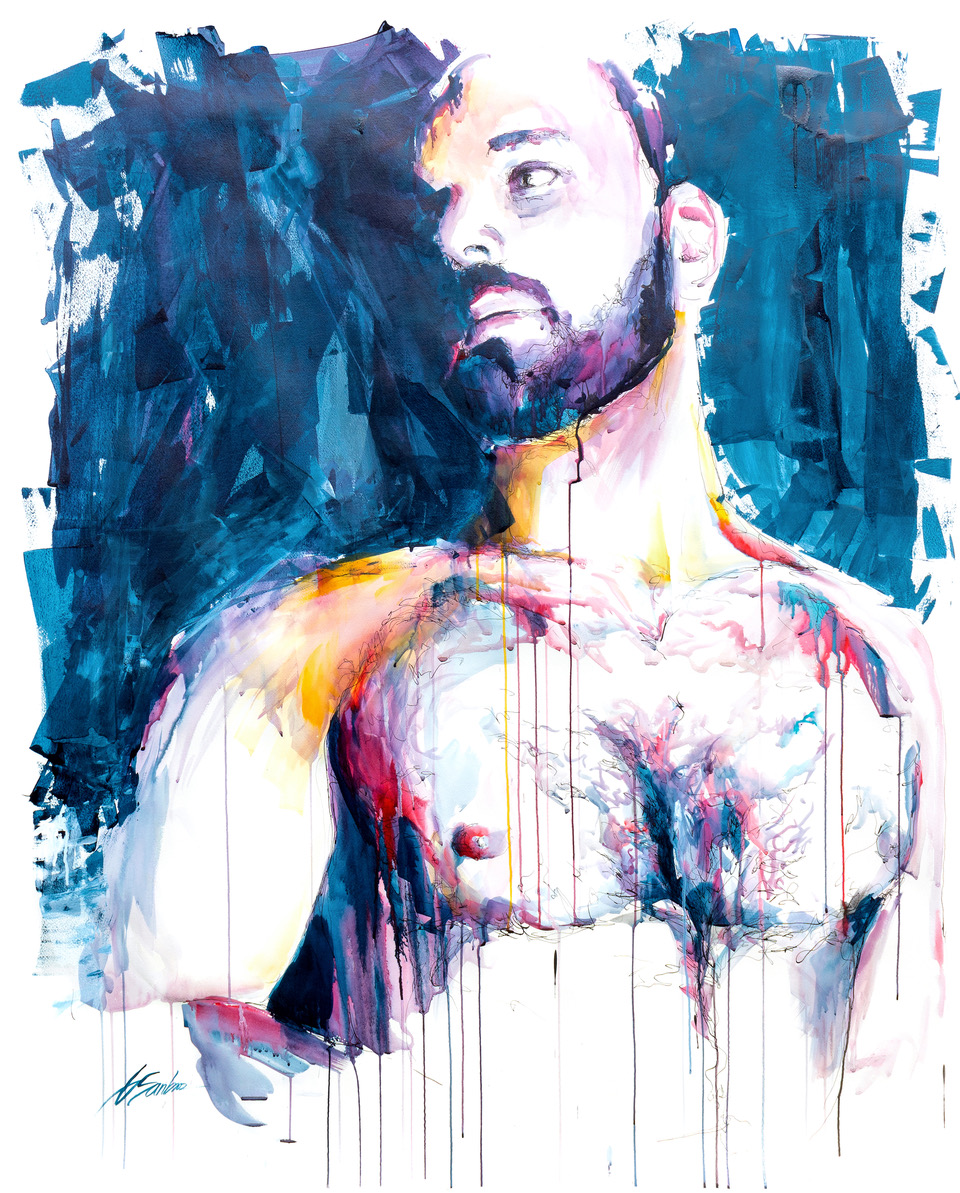
What about painting the male body do you find so fascinating? Having focused on this subject matter for some time, how do you continually find fresh ways to present new paintings of male figures that are both evocative, sexual, and artistic all at the same time?
The male body is complex. I started to paint the male figure freshman year in college and I haven’t stopped since. The human body is fascinating in itself, but the male body lacks the attention it deserves in the art world. I saw that early on in my career and have stuck with this direction ever since.
When painting the male figure, I seek to capture an emotional story. I can do this by twisting the torso, bending the arms, turning the back, or giving a sense of wonder based on where the eyes are looking. This keeps things fresh and exciting for me. The story I am trying to tell is one of sensuality and tenderness. The world is a big place and there is never a shortage of ideas. I’ve always kept sketch books and never leave home without one. In fact, I sketch people all the time and use them as references for paintings. Of course, like a good novel, I change things up to keep the people anonymous. I don't intend for my subject matter to be sexual; my goal when starting a new painting is to capture a mood and I do this through movement. That movement may be erotic. Body movement is like singing a song to me; I can tell a sad or determined feeling by just a twist of the torso.







Why do you think it is so important to display the male form in art in such a sensual way? Furthermore, what about depicting men together in your paintings do you take the most pride in? Representation is always so important, how do you think the LGBT art scene has changed over the years, and how has it affected your work personally?
The male figure deserves more attention in a positive way. I find that men lack the sensual attention of the artist's eye, especially in the art world. Men are strong, but they are also tender and soft. My vision has always been to capture the many beautiful sides of the male form.
The story of love has and will forever be a subject in my paintings. I am a hopeless romantic and have always enjoyed capturing special moments of love on canvas. As an artist, I want to bring a softer more delicate side to love between men; which also happens to be a story that I wanted to have in my own life. Capturing images of men in love that shows the tenderness and romance between them while looking into their everyday lives as a couple is important to me. I follow a few artists that paint beautiful LGBT scenes, but I find them to be too overly sexualized for my taste. I want to take the viewer to a place where there is an emotional connection of two men sharing a life together and through that a broader story can be told.
I have received some criticism about my works that depict two men in love. The subject matter strikes a hard cord in many people. Painting love is my ultimate passion of expression, so I have not allowed their opinions to negatively influence my art.








What about using watercolors do you enjoy the most? Why do you feel that watercolors work so well to paint the kinds of subject matter you create?
Watercolor is far less forgiving, just like with ink, which is why I love the medium. I never sketch out the drawing I am going to do in pencil. I almost always start with ink and end with watercolor. I find that I am much happier in creating work that is real; I want my drawing to be as authentic as possible. I've learned to listen to my intuition and ink has taught me that making mistakes is part of the process. The mistakes I judged I might have made usually turn out to not be mistakes at all when looked upon with fresh eyes. I realize that what I thought was a mistake was perfect intention. The same process happens when I paint and is one of the main reasons that I fell in love with watercolors. Watercolors are less forgiving than acrylic or oil paints and at times have to be tenderly caressed; with each brush stroke layered onto the next. Some layers laid on top of damp previous strokes can lead to very nice results; a beautiful dance of layered chaos.
Watercolors are dreamlike to me. They allow my visions to come to life in a way unlike any other medium. The story unfolds as if things are just coming into focus slowly. I love to play with light in a dramatic way. In my paintings, I exaggerate the light on the skin especially, and watercolors reveals this unlike any other medium. I tend to leave large portions of the watercolor paper untouched to depict a specific light source.





How does using bright colors to paint your male figures allow the scenes to come alive in ways that realistic colors wouldn't? A lot of your paintings have vertical lines of paint running down from the male figures' bodies which is such a fascinating element of your work. How did you first choose to incorporate this element into your paintings, and why do you enjoy to repeat it across many of your pieces?
Color is everything in my work. When I play with color, I learn things about my subject that I might not have learned if I tried to capture the realistic skin tones. I love to explore values by using colors that would not initially make sense intellectually.
The vertical lines are symbolic of connection, letting go, releasing energy, and being grounded. We all crave connection, but we are afraid to release old wounds or face lingering problems. So, we stay connected even if it's in a negative way. The lines represent my freedom of letting go and getting in touch with the strings I feel that just can’t be cut and I envision the emotion the model might feel when letting go of old baggage.
I can remember when this style was recognized within myself. For years, I painted hyper-realism and could make things look like a photograph, but my sketchbooks were completely different. They held the real artist within me. I remember one day going through my old sketchbooks and I realized that the dancing, gestural form of expression in the sketchbooks was the artist who I needed to share: that was what the world needed to see from me. My style came from a simple method and mantra that I kept telling myself: The method was to never erase, but to play with the lines, splatters, and mistakes. These features were all part of the process. The mantra was: “There are no mistakes, every brushstroke is an extension of my expression.”






How has painting the naked male body been freeing to you as an artist? Do you ever feel like you need to censor a work when crafting it, or do you simply let your artistic intuition guide you and allow your work to be as explicit as it needs to be in order to achieve your vision?
While in college we had a great balance of men and women in our life drawing classes. I found that drawing women never gave me that challenge I was seeking. Women are beautiful in their own right, but I was seeking the complexity I found in the male figure. I also have felt that women have dominated the canvas in the art world and that the beauty of men equally needs a voice. The complexity of the male physique has always captivated me. I hope to bring that beauty to light with my work and show the tenderness the male figure deserves in the art world.
For years, I never painted the full male nude. After college, I painted many images not showing the full nude. I felt it to was too much for the viewer and received a lot of negative feedback when I did paint full nudes. However, that all changed when I realized that the full beauty of the male form needed to be uncensored because so many pieces of work were censored. The penis has always been a bit taboo in the art world. This conveys a tone of shame towards the male body. For me, I don't predetermine whether the painting will “show it all” or “won’t” when creating. I let the painting and emotion tell me as I am sketching or even starting on the larger piece. I don't choose to paint the full nude to cause reaction, but rather to tell the full story of that painting.











We're obsessed with your painted male figures that are painted directly onto pages of old books. What about mixing male bodies across words on a page appeals to you? Do you pick specific pages that have a certain text or story on the page that matches the artwork, or is it more just a stylistic choice of words against bodies?
I’m obsessed, too! To this day, my paintings on old vintage flea market book pages are my favorites. It’s as though two stories are being combined into one and a new story is being told.
I love to read. I love to paint. One sunny afternoon while at a flea market in Maine, I found several old books in a twenty-five cent box. I had been looking for new textured papers at the time for some of my watercolors and thought it might be fun to paint on book paper. What I didn’t know is that it would turn into a passion and I would have friends sending me books regularly to paint on.
For me, the pages tell a new story once the painting is painted. The words are no longer the original, but instead they depict a new story when read, as the paint covers some of the words on the page. I rarely choose the page specifically for a painting unless it’s a page with a small amount of text. The exciting thing is that the stories always come out wonderfully even when randomly chosen; it's as if the pages were chosen on purpose — synchronicity!







Are most of the men you paint based off of images, or do they come from your imagination? Where do you pull inspiration from when working on a new painting? And who are some of your biggest artistic influences, including artists both living and dead?
Although I admire those who draw from memory, I am not an artist who likes to draw from memory. I like references. I keep many sketchbooks of references; I also like referencing models and photos. Such references help guide the proportions I like to achieve. I study a lot. I study people wherever I am. I watch their movements, examine their body types, facial gestures, and even what they are wearing. While watching people, I sketch out several gestures so that I can refer back to them.
I've always been a big fan of studying the great masters. I fell in love with Picasso's bravery and tenacious appetite to explore his authentic self. He discovered who he was and what the world around him meant, and he expressed that through his work. That level of bravery has truly inspired me. Picasso as an artist was revolutionary; his work challenged the art world and turned it upside down. Picasso is an artist with a tenacious appetite and who was fearless in his pursuit to make a difference through his art. Hell, even my dog is named Picasso!
To see more of Brenden's artwork, follow him on Instagram, visit his website, or check out his online shop.
Contributor
Brenden Sanborn
Watercolorist Brenden Sanborn captures the beauty and sentiment of love with the male figure. Brenden's work has been shown in several national art shows, galleries and charity auction events. He lives in Miami, Florida.

